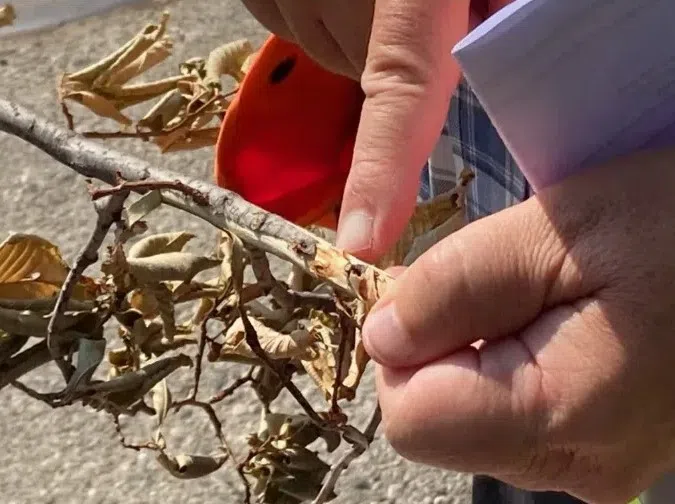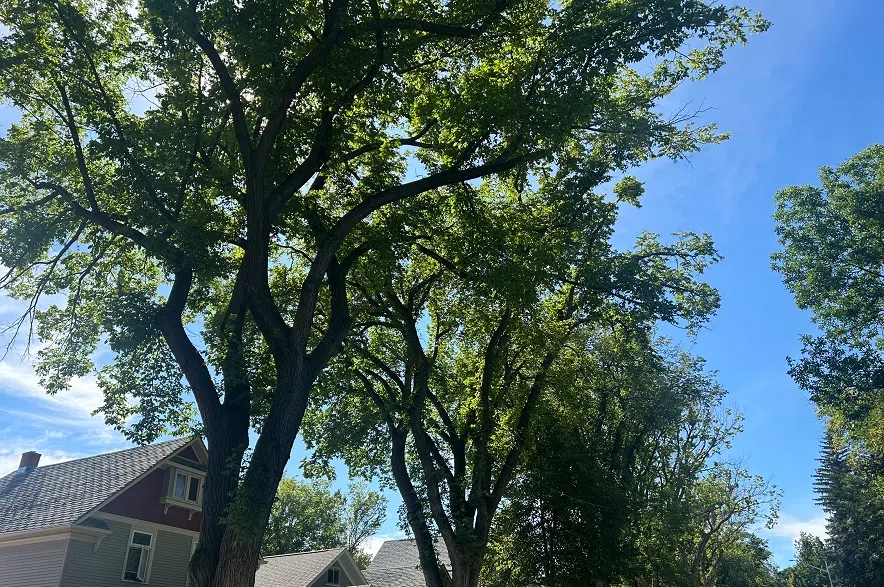Saskatoon’s Parks Department has discovered two confirmed positive cases of Dutch elm disease (DED).
These two cases were found in the Montgomery neighbourhood, two cases in Riversdale, one in Caswell Hill and also in City Park and Sutherland.
Parks staff will be sweeping stored elm wood within a one kilometre radius around the confirmed DED cases. Staff have already conducted several proactive sweeps for stored elm wood in various neighbourhoods with over 4,000 kg of wood seized so far this season.
Read more:
- Dutch elm disease hits Regina early, city urges public to help protect urban forest
- Two more trees removed as Dutch elm disease spreads in Regina’s Wascana Centre
- Prevention is key against Dutch Elm disease: Rick Van Duyvendyk on Greg Morgan
Conducting surveillance around impacted areas includes checking every property for elm firewood or brush and removing it when it is found. If residents are not home, staff will remove the elm wood and leave an Elm Infraction Notice with a note indicating that the wood was removed.
As part of the Forest Resource Management Act, the Provincial Dutch Elm Disease Regulations, 2005 allow inspectors to enter private property to inspect for elm wood, remove elm wood and sample private elm trees. Under the regulations, property owners will be asked to remove and dispose of infected elm trees.
What is DED?
DED is a serious disease caused by a fungus that clogs the elm tree’s water and nutrient conducting system, which eventually causes the tree to die. DED was introduced in North America in the 1930s and has since wiped out millions of elms across Canada and the United States. In Saskatoon, elms make up 25 per cent of our urban forest.
How is DED spread?
In Saskatchewan, the disease is spread by several species of elm bark beetles, which can carry tiny spores from the DED fungus and spread to healthy elm trees. The DED primarily spreads through the movement of elm firewood or by using contaminated pruning tools.
How can DED be prevented?
• Never store elm wood or branches. Don’t buy or take elm wood from anyone and don’t burn it.
• Follow the provincial pruning ban (Apr. 1 to Aug. 31). Elm bark beetles are attracted to freshly cut wood and are most active during this time period.
• Dispose of elm wood at the Saskatoon landfill. Do not take elm to the compost depot or put it in your green bin. Dispose of it immediately, even if it is during the provincial ban. Disposal of elm wood at the landfill is free.
How to identify and report unhealthy elm trees and firewood

A Wascana Centre staff member points to evidence of Dutch Elm Disease on a removed branch.(980 CJME file photo)
American elm trees with DED may start showing symptoms as early as June. Typically, the leaves will start to wilt and turn yellow, then curl and turn brown. If you suspect an unhealthy elm tree or are unsure of what type of firewood you have, take a photo and complete the online form at saskatoon.ca/dutchelmdisease or call Urban Forestry at 306-975-2890.
For more information on DED, visit saskatoon.ca/dutchelmdisease.











